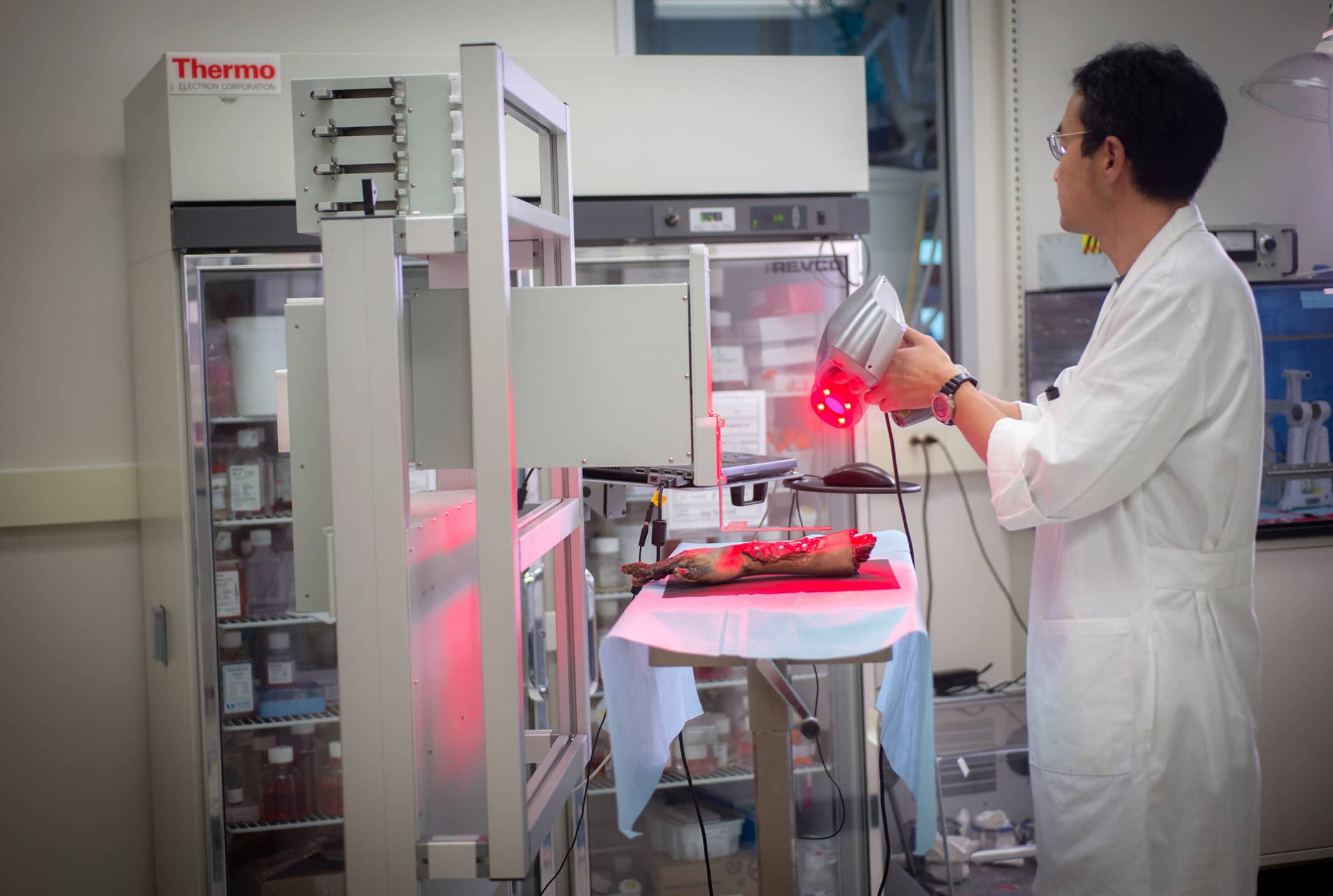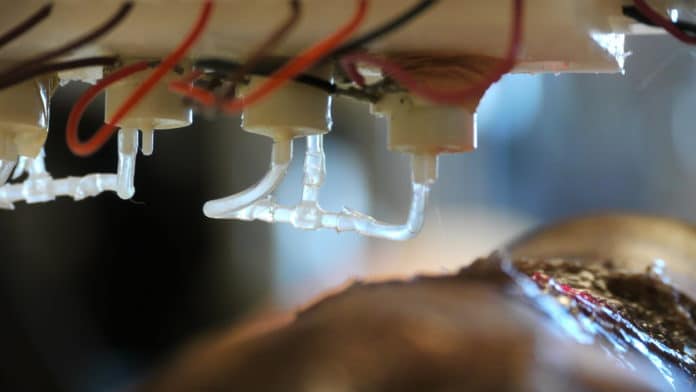Bioprinting is thrilling because of its potential to develop living human tissue which can be used for clinical trials and to ‘treat’ patients. Specifically, recent advances have enabled bioprinting of biocompatible materials, cells, and supporting components into complex 3D functional living tissues. The technology can also be applied to regenerative medicine to address the need for tissues and organs suitable for transplantation.
Now, a team of scientists at Wake Forest Institute for Regenerative Medicine (WFIRM) has developed a mobile skin bioprinting system that can potentially print bi-layered skin directly into a wound. This is a first of its kind of system that provides on-site management of extensive wounds by scanning and measuring them in order to deposit the cells directly where they are needed to create the skin.
The new technology is truly impressive. It consists of mixing major skin cells involved in wound healing with a hydrogel and then placing them in the bioprinter. Like something out of a sci-fi film, the system then proceeds to create skin layers.
More importantly, it scans the wound so as to apply the newly printed skin exactly where it is needed. In essence, the device mimics the skin’s natural healing but faster and perhaps even more efficiently.

Although, the system is still in the prototype stage and scientists are further planning to conduct a clinical trial in humans.
Sean Murphy, Ph.D., a WFIRM assistant professor who was the lead author of the study said, “Currently, skin grafts to treat wounds and burns are the “gold standard” technique, but adequate coverage of wounds is often a challenge particularly when there is limited availability of healthy skin to harvest. Skin grafts from donors are an option, but risk immune rejection of the graft and scar formation.”
“With the WFIRM bioprinter system the researchers could see new skin forming outward from the center of the wound and this only happened when the patient’s own cells were used because the tissues were accepted and not rejected.”
WFIRM Director burns. A mobile bioprinter that can provide on-site management of extensive wounds could help to accelerate the delivery of care and decrease costs for patients.”
wounds and help them close, those products do not actually contribute directly to the creation of skin.”
The paper is published this month in Nature’s Scientific Reports journal.
